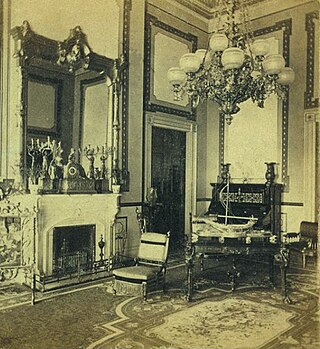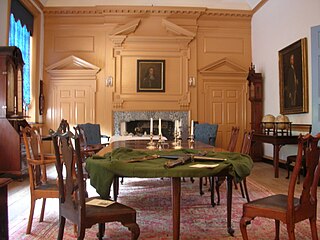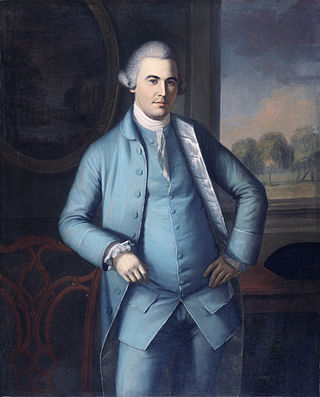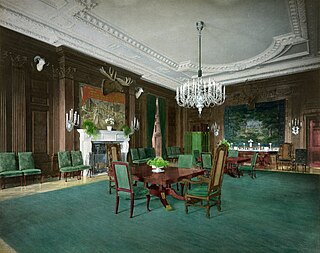Special projects
The White House

A number of Kittinger reproductions can still be found in the West Wing office area of the White House in Washington, D.C. Colonial Williamsburg Foundation interior designers were commissioned by President Richard Nixon in 1970 to redo the interior design of the President's offices. Kittinger Company furniture was used extensively in the redesign since this company was the sole licensee of furniture for the Colonial Williamsburg Foundation's famous program to produce exact reproductions of 18th century antiques. [6] Included in the redesign was a new conference table and chairs for the cabinet room. President Nixon wrote a personal check to pay for the new cabinet room table custom made by The Kittinger Company and donated it to the White House.
Along with furnishing areas of the White House, the Kittinger Company has also produced furniture for the inaugurations of former President George W. Bush and President Barack Obama. In 2005, the White House commissioned six chairs from Kittinger for the second inauguration of former President George W. Bush. In 2009, the White House commissioned an additional two chairs and utility table for the inauguration of President Barack Obama. [7] The White House reused the pieces crafted by Kittinger again for the second inauguration of President Barack Obama in 2013. [1]
Colonial Williamsburg Foundation
In 1937 the Colonial Williamsburg Foundation selected the Kittinger Company as the exclusive licensed reproducer of furniture at Colonial Williamsburg [8] Kittinger reproductions were sold through the Williamsburg Reproductions program, the Craft House, established that year. [9] Visitors to Colonial Williamsburg could see Kittinger cabinetmakers in period costume at work in the workshop established in the Ayscough house. [10] Williamsburg reproductions came with a bill of sale detailing the history of the original piece and were branded with the Williamsburg stamp. Other reproductions by Kittinger were labeled with a letterpress label in the 18th-century style. Like their rivals Biggs Furniture of Richmond, Virginia, Kittinger served an upper middle class market in search of mostly mahogany, reproduction furniture with dovetailed oak drawer lining, frame-and-panel backs and other mark of quality comparable to the originals, in the Queen Anne, Chippendale and Hepplewhite styles. In 1990 the license expired and was granted to Baker Furniture Company.
Apart from the Williamsburg reproductions other series were marketed under names evoking the colonial period: Richmond hill Collection, [11] Old Dominion Collection [12] and the like.
Historic Newport
The success of Kittinger reproductions licensed by Colonial Williamsburg Foundation encouraged the Preservation Society of Newport County to license Kittinger to reproduce 18th-century pieces by the Goddard and Townsend families of cabinetmakers and other furniture made in colonial Newport, Rhode Island, in the Society's possession. Paper labels on this series of furniture read "For the Preservation Society of Newport County".
George W. Bush Presidential Library and Museum
The Kittinger Company was commissioned to produce several of its pieces from the White House including fireside chairs, coffee table, pen book table, telephone table, council table and mahogany chairs with cane backs. [13] These pieces are on display in the replica Oval Office in the George W. Bush Presidential Library and Museum.
Government
In the past, the Kittinger Company has been commissioned to craft furniture for the Capital Building, Supreme Court, and several government officials. [14] Kittinger also reproduced under license furniture for Independence Hall, Philadelphia, and Historic Savannah. [15]
White House Down (film)
Sony Pictures commissioned Kittinger to make reproductions of its furniture in the White House for its film White House Down , released in 2013. Kittinger crafted several sets of furniture for the production of the film. [13]















